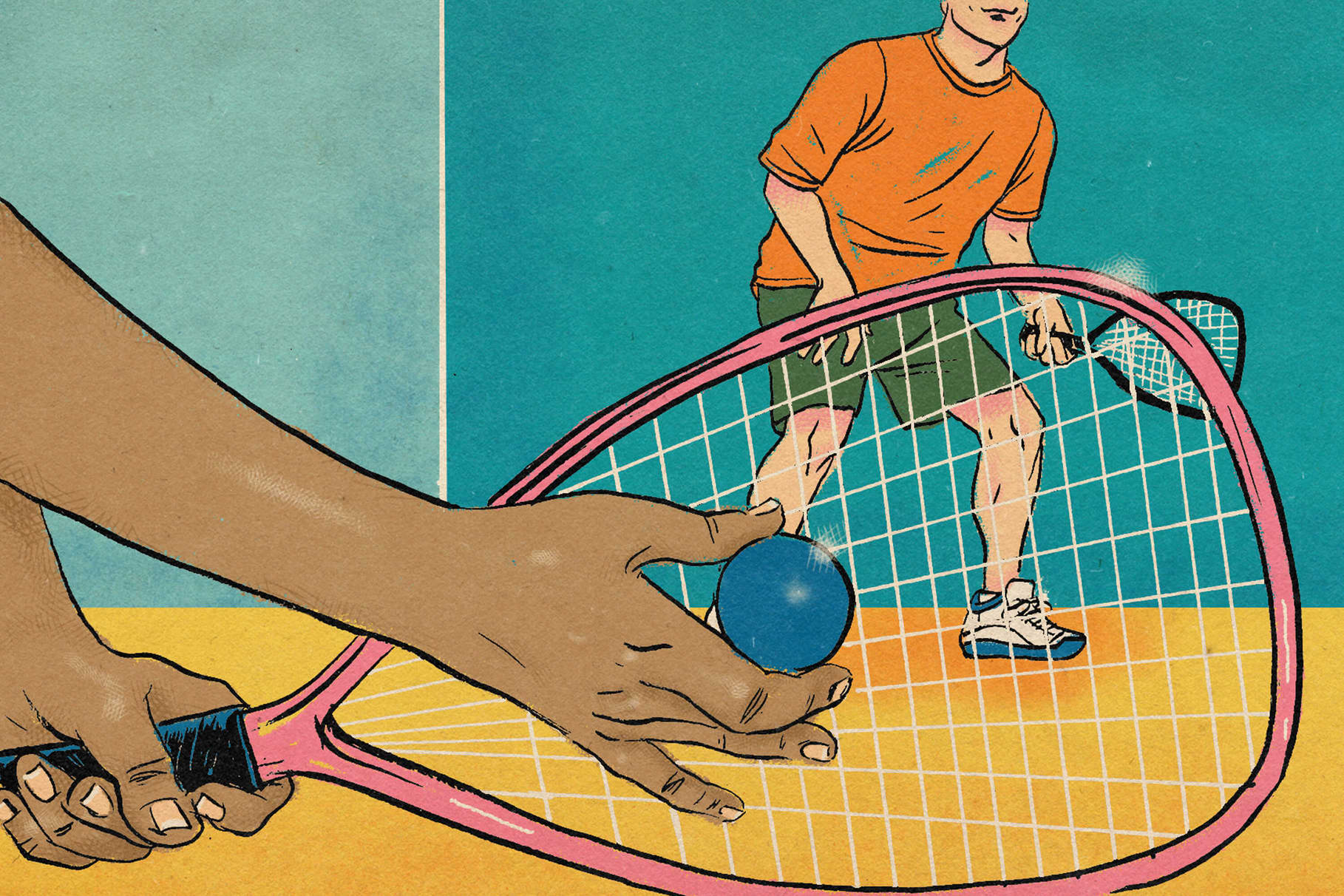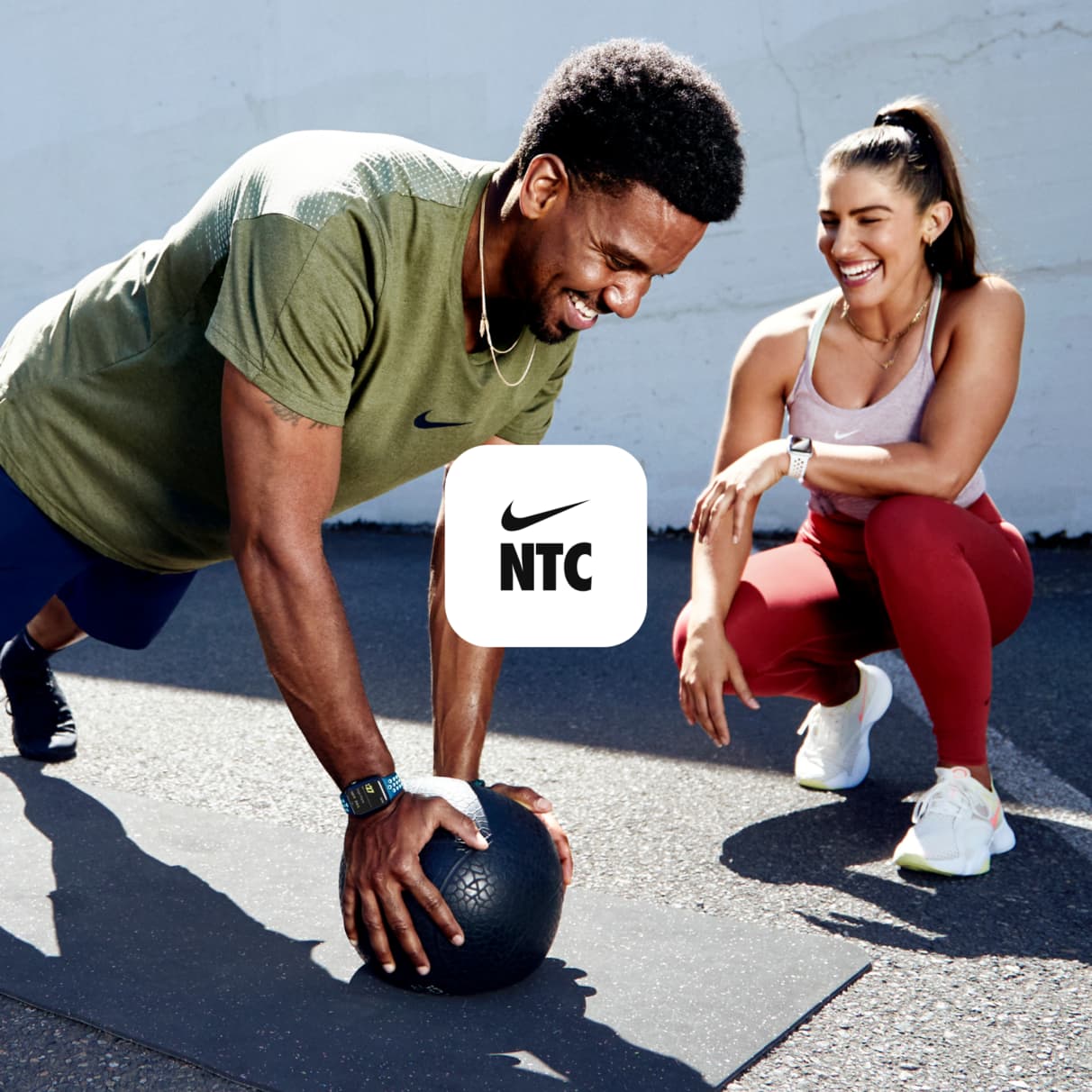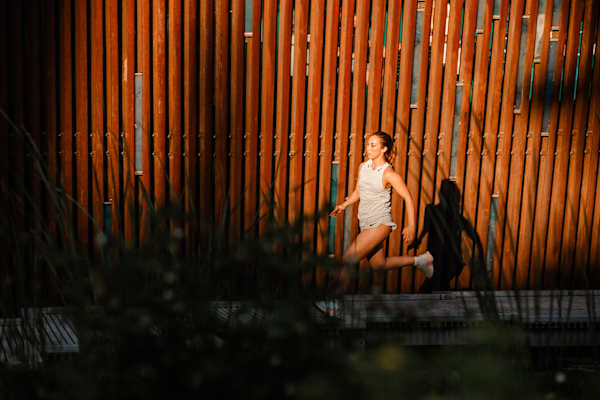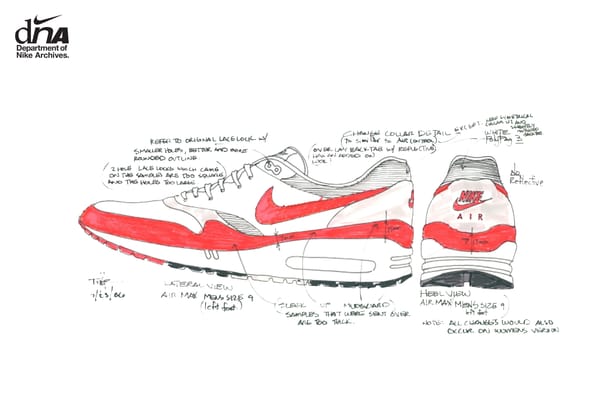How To Play Racquetball
Sports & Activity
Learn the basics to get started and find out what gear to bring to the court.

Maybe you’ve passed your gym’s racquetball court on the way to the locker room. Perhaps you’ve seen the epic game broadcasted on TV. Or, maybe you’ve watched a game unfolding and wondered about the rules, how to score, and what all those markings on the floor mean.
Here, learn how to play racquetball and what gear to take to the court.
What Is Racquetball?
Racquetball is a combination of handball and squash. It became one of the fastest-growing sports in the 1970s and 1980s when it attracted roughly 14 million players worldwide, according to the Canadian Olympic Committee. To play, players hit a rubber ball (2-¼ inches in diameter and weighing 1.4 ounces) back and forth inside a four-walled court using a strung, short-handled racquet.
Benefits of Playing Racquetball
The sport uses all your major muscles and, thanks to the speed of play, gets you feeling breathless. “You get a good workout in a short amount of time,” said Del Villanueva, head racquetball coach of the Racquetball Club at the University of California, Berkeley.
Besides offering a great cardiovascular challenge, racquetball can boost upper- and lower-body strength simultaneously, per Harvard Medical School. Plus, it may help you live longer. A study published in 2017 in the British Journal of Sports Medicine found that people who regularly played racquet sports like racquetball over the study’s nine-year period were 47 percent less likely to die from any cause and 56 percent less likely to die from heart disease.

How To Play Racquetball — Here’s What You Need To Know
Racquetball can be played in singles, with two opposing competitors, or doubles, with two teams of two players. As with tennis, the goal is to win each rally, or each return after the serve.
A racquetball match is won by the player who wins two games, with each game played to 15 points. But if both players win a game, you’ll go into a tiebreaker game, which is played to 11 points.
To decide which player serves first at the start of the game, you can flip a coin. The player who wins the coin toss serves.
You can only serve from within the service zone, a 5-foot by 20-foot area on the court. The boundaries of this area are marked by the “short line” in the center of the court and the “service line,” or the line closest to the front wall. Neither your foot nor the ball can extend past the service line when serving the ball, and the ball must bounce once within the service zone before you strike it against the front wall with your racquet.
After the ball is served and makes contact with the front wall, it can hit one side wall before landing on the floor behind the short line. If the ball hits more than one side wall or doesn’t land behind the short line, the serve is not good (called a fault serve), and the ball is not in play. The serving player can serve again but loses the serve if they make two fault serves in a row.
You can also lose the serve if you commit a penalty hinder, or block your opponent’s ability to hit the ball. For example, if you stand in front of or distract your opponent during play.
But there are other types of hinders. In general, a hinder simply means something is interfering with your ability to play safely. For example, returning a serve will result in striking your opponent with your racquet. “You actually say ‘hinder’ out loud and people stop,” Villanueva said. In most cases, you’ll simply restart the rally without losing the serve.
If you’re not serving the ball, you’ll stand behind the receiving line, which is located behind the short line. According to Villanueva, the receiving line is also called the safety line. “It’s to keep the receiver away from the server, for safety,” he said. Ignore the line during a serve and you increase your risk of accidentally hitting the other player with your racquet — or getting hit yourself.
You must stay behind the line until the ball either bounces in the safety zone (a 5-foot by 20-foot area between the short line and the receiving line) or crosses the receiving line. If you step on or over the receiving line before then, the serving player gets a point.
Only the serving player can score points, according to USA Racquetball. Points or goals are achieved when an opponent doesn’t return the ball before it touches the floor twice. A goal can also be scored if the non-serving player doesn’t hit the ball back to the wall before touching the floor.
For context, the racquetball court is four-sided, measuring roughly 20 feet wide, 40 feet long and 20 feet high, with a back wall at least 12 feet high. It contains many floor markings. But there are a couple of other markings you should know about.
Service boxes are the two small rectangular boxes closest to the wall on each side of the service zone. They are used only when playing doubles (considered out of bounds during singles) and are where you’ll stand when your partner serves the ball, Villaneuva said. You must keep both feet within the service box until the ball passes the short line. Then, you may step outside the box. When it’s your turn to serve, your partner will stand in the service box.
Also located within the service zone are the drive serve lines. These are three feet from the right and left side walls and can only be used for a drive serve. A drive serve is a type of serve that involves striking the ball hard and low (below your shoulders). You can make a drive serve from anywhere on the court, including from within the 3-foot area inside the service zone marked by the drive serve line. This area cannot be used for other types of serves.

What Do You Need to Play Racquetball?
Ready to try racquetball? There are a few items you need before you step inside the four walls of the court, including an athletic shirt or tank top and sports bra (if applicable) with moisture-wicking materials like polyester, nylon, spandex, or bamboo. Your top (and bra) should fit comfortably and not be too tight or loose, as this might make it challenging to run and hit the ball.
Similarly, your bottoms (pants or shorts) should be built to wick moisture, with a fit that’s loose enough to allow unrestricted movement, yet fitted enough so you’re not constantly pulling on your waistband. If you’re wearing pants, be sure the hem doesn’t drag on the ground — excess fabric is a tripping hazard.
Pick shoes designed for racquet sports, whether tennis, squash or racquetball. This ensures you can pivot more easily and won’t leave shoe marks on the court. Pair your court-appropriate shoes with moisture-wicking socks. Select the sock height you prefer, but note that low-cut socks might slip while you play.
Other essential gear includes a racquetball racquet and racquetballs. Unless you’re playing at a facility that provides racquets, you’ll need to buy your own. Or, you may be able to rent one from a recreation center or sporting goods store in your area. Check to see if any offer rental programs. Racquetball racquets are distinct from those used for tennis and squash. They have shorter handles and a strung surface that’s wider and teardrop-shaped.
Racquetballs are also unique in that they’re larger and bouncier than squash balls while smaller and lighter than tennis balls.
You may also want to consider eye protection. Wearing eye protection inside a racquetball court is a smart move — you never know when you might catch a stray serve to the face. Eyewear that’s designed specifically for racquetball is your best bet.

Racquetball Vs. Squash: What Are the Main Differences?
While both sports involve hitting a ball with a racquet inside a four-walled court, there are several key differences.
First, consider the gear: Racquetball uses a teardrop-shaped racquet with a short handle. Meanwhile, squash uses an oval-shaped racket with a longer handle, making it longer overall. Racquetball racquets can be up to 55.9 centimeters long, while squash rackets can be up to 68.6 centimeters long, per the Canadian Olympic Committee. Both racquetballs and squash balls are hollow and made of rubber, but racquetballs are roughly 42 percent larger and bouncier.
The court dimensions also vary somewhat. Both sports are played on a four-walled court, but racquetball courts are 20 feet wide, 40 feet long and 20 feet high, while squash courts are 21 feet wide, 32 feet long and 18.5 feet high.
Finally, you must be the server to earn a point in racquetball, but either player can score off a serve in squash.
Words by Lauren Bedosky





